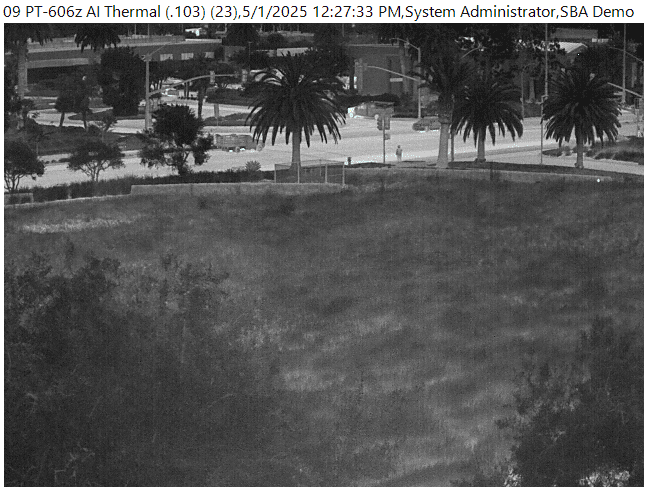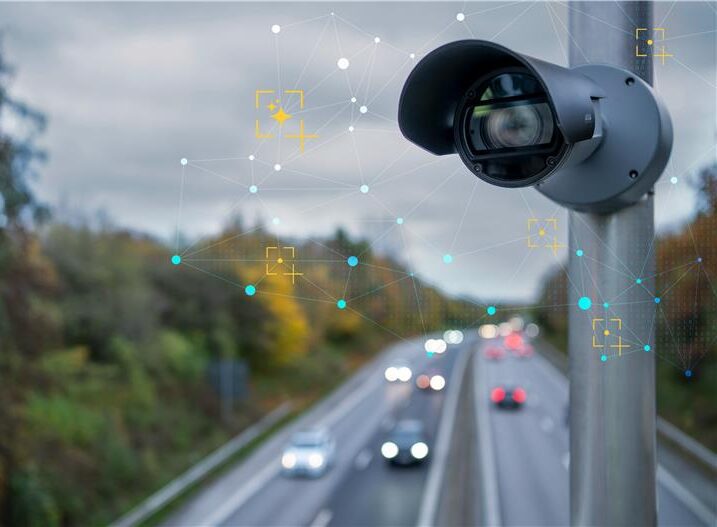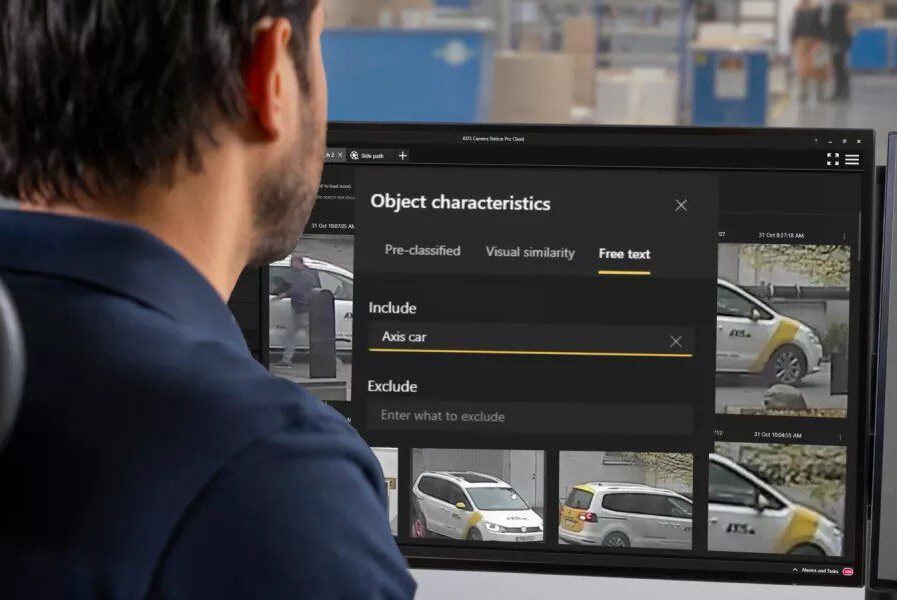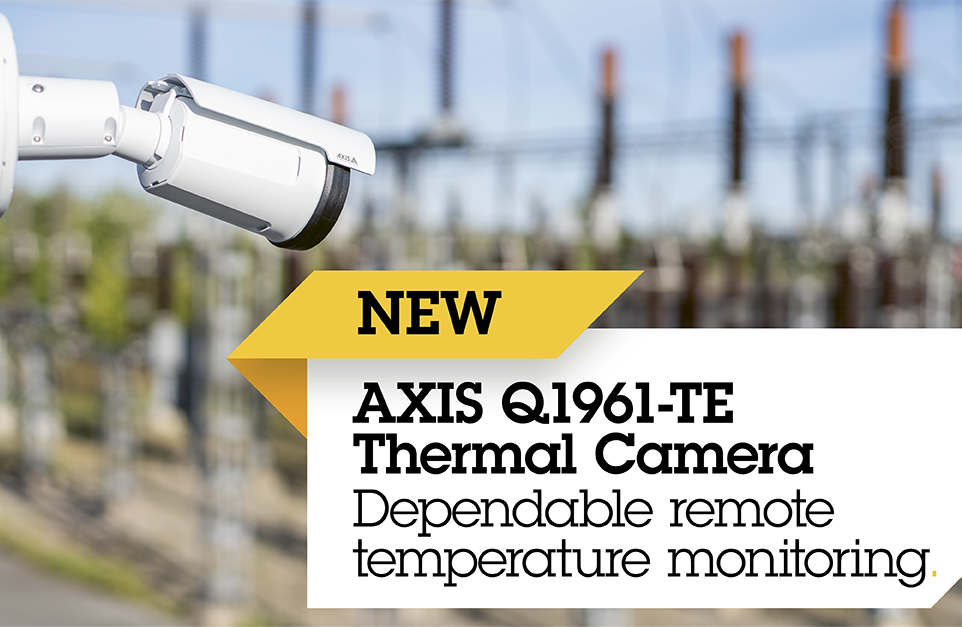
The UK is “bucking” the world-wide trend toward IP video surveillance cameras, according to Phil Doyle, regional director for Northern Europe at Axis Communications, but the company has a new product which they hope will help it achieve further in-roads into the camera market.
We spoke to Doyle on the occasion of the official opening of Axis’s new regional office in Watford, North London on Thursday. He told us that he and his fellow regional directors were surprised by the comparatively slow take up of IP cameras in the UK.
He believes that IP cameras represent 12 to 18 per cent of the installed cameras in the UK, which he compares to an install base of approximately 45 per cent in the Nordic countries including Sweden where Axis is based. Approximately 30 per cent of cameras being installed today are IP, he added, compared to 80 per cent in the Nordic countries.
“It’s been surprising how resilient analogue has been [in the UK], and it comes down to a number of factors,” he said, “whether that’s just people who are used to installing analogue, whether they feel it’s a safer option, or whether they feel that technology isn’t ready for the UK.”
We’ve heard it before, but Axis truly believes that the video surveillance camera market is at a tipping point which will see IP taking over rapidly from analogue. Of course, critics of IP surveillance technology say that the IP sector has been predicting this for years and yet analogue cameras continue to be specified in large numbers.
To help promote the tipping point, Axis has rolled out a new product called Axis Camera Companion which is supposed to challenge digital video recorders head on.
“The whole concept behind Axis Camera Companion is that a number of markets, the UK included, are very much dependent on DVRs and storage boxes. The way Axis looks at the market, we already have intelligence at the edge of the network and we felt we should have storage at the edge of the network as well,” Doyle said.
In the new architecture, the data from the cameras isn’t stored on a DVR – it’s stored either locally on a detachable memory card (SD card) or on a network attached storage (NAS) device, essentially a hard drive which you plug into your network which doesn’t require a PC to operate it.

Each camera has its own operating system so there is no need for a PC to manage the system on a day-to-day basis.
To view images and configure the system, customers download the Camera Companion software from Axis. It’s free of charge and runs on any PC. After installing the software, you only have to link your PC or laptop into the network and the software automatically finds the cameras. Select the cameras you want to use and you can configure the settings and view live and recorded images.
Axis cameras can handle SD cards with up to 32 gigabytes of storage. To handle SD cards with 64Gb of storage would require a hardware upgrade to the cameras, according to an Axis sales engineer.
In a typical installation, 32Gb is enough storage to give you two to three weeks’ worth of event recording, says Doyle. That’s less than the Home Office recommendation of 30 days storage but the company believes this is adequate for most applications and if you need continous, 30-day recording, a NAS drive will solve the problem.
Handheld explosion
Axis Camera Companion will challenge DVRs because of the ease of installation, Doyle claimed. Using cameras that are powered over the Ethernet cable, plugged into a PoE switch that’s supplied by a uninterruptible power supply (UPS), it’s possible to create a resilient CCTV system that’s as easy to install as an analogue system.
The target is small retail outlets and commercial offices which need between six and 16 cameras. Being IP based, you can have a mix of standard and high resolution cameras with built-in motion detection and video analytics. Third-party apps can extend the functionality even further, including remote viewing via iPads, iPhones and Android phones.
If you already have analogue cameras in place and you don’t need to swap them out for IP cameras, you can also use a Camera Companion compatible encoder to convert the analogue signal to digital.
Perhaps one of the greatest drivers for IP cameras now is the explosion in digital handheld devices. The ability to stream live and recorded images to a phone or tablet computer is making more people wake up to the possibilities of IP, Doyle said.
“We have talked to a number of smaller organisations and said to them, if you were able to do this and have access to the images and view them like this, and yet still have a professional company install and maintain it, would that be an advantage?” Doyle said.
“A lot of them say yes. They don’t really know why, they just know that they would like to be able to view an incident if it happens. With the automated SMS and email that you can do with cameras these days, if anything happens, you have that immediacy that we all crave these days and you can see exactly what’s going on.”
Affordable IR illumination
Meanwhile, the company also recently introduced “affordable” cameras with built-in IR-LED illuminators at ISC West. Based on the M11 network camera series, the new models – which can be identified by the L designation on the end of the model number – will get their first UK showing at IFSEC in May.
The concept of built-in IR illuminators is certainly nothing new and Axis has provided IR accessories for its cameras for years, but Doyle said customers have been asking for this feature for several years now for several reasons.
“One is ease of installation – if it’s built into the camera already, it’s a lot easier than having to put extra accessories on it or external illuminators. And the second one is that we have found using the technology we have available now, we have managed to keep the high level of image quality you would expect with Axis but bring the price down.”
Cameras with built-in IR-LEDs cost about $US50 to $US80 more than comparable Axis cameras without IR-LEDs.
“We use fewer IR illuminators but they are more powerful than some of the other ones on the market, so you end up with less noise on the image but the illumination is pretty good,” he said.
Doyle rejected the suggestion that Axis was playing catch-up in this market sector to manufacturers who have had built-in IR illumination for years.
“We’ve been advancing other areas of the market,” he said. “It’s a case of prioritising where our R&D goes and making sure we are growing the business as expected by the market place, ourselves and our shareholders.
“It’s just oen fo those thigns thatw e didn’t see as having as much potential as some of the to her products we are bringing out. We are bringing out 50 products every two years, so it’s a case of making sure we are bringing the right ones out for the market.”
Axis Communications will have two stands at IFSEC this year. In addition to their showcase stand, which will have a full range of products for a number of vertical markets, the company will also have a stand devoted to Axis Camera Companion which will be “focussed around bringing IP to smaller installations and maybe help installers who aren’t confident installing IP”.
“So it will focus around Axis Camera Companion, training, education and tools that are available to help people move into IP if that’s where they want to go.”
Links
More information about Axis Camera Companion
Axis Camera Companion datasheet (PDF, opens in new window)



























